Mission of the Hawaiian Rare Plant Program
To aid in the prevention of further extinction of Hawaiian plant species by initiating and maintaining an in vitro plant and seed bank collection, and propagating plants for use in approved restoration and reintroduction projects.
About the Hawaiian Rare Plant Program
Lyon Arboretum’s research and education emphasis on conservation biology and its strong horticultural specialization has led to the development of the Hawaiian Rare Plant Program, which is comprised of 3 storage and propagation facilities; a Micropropagation Laboratory, Seed Conservation Laboratory, and Rare Plant Greenhouse.
Since 1992, the Hawaiian Rare Plant Program (HRPP) has focused on the rescue and recovery of Hawaiʻi’s most critically endangered native plants, such as the native taxa that have 50 or fewer representatives left in the wild. The Hawaiian Rare Plant Program serves as an ex situ plant and seed germplasm repository, propagation, and distribution site for plant propagators, land managers, and other end users who do not possess the resources to store and propagate their Hawaiian endemic plants that are in jeopardy on their premises.
The Hawaiian Rare Plant Program is also able to maintain viable plant germplasm for an indefinite period of time for future research or use in restoration sites. Due to its location, unique propagative methodology and affiliations, the program is Hawaiʻi’s largest and most diverse collection of Hawaiian plant taxa. To date, the Hawaiian Rare Plant Program micropropagation laboratory has successfully grown approximately 300 of the 1400 known Hawaiian plant taxa using micropropagation techniques, of which 136 are federally listed as endangered or threatened. Currently, there are >30,000 plants comprised of 200+ native plant taxa inventoried within the in vitro germplasm collection and greenhouse, over 70% of which are federally listed as threatened or endangered. In the seed storage facility, over 25 million seeds are banked from over 9000 accessions. These accessions represent more than 600 taxa or over 40% of the native Hawaiian flora. Of these, about 40% are federally listed as threatened or endangered. In 2016, the Seed Conservation Lab also launched the Rapid ʻŌhiʻa Death Seed Banking Initiative to collect and bank seeds of ʻōhiʻa (Metrosideros species) statewide during the ROD crisis, for future reforestation.
In 2016, the Hawaiian Rare Plant Program received 2-years of funding support from the IMLS Museums for America-Collections Stewardship Program, to conduct a comprehensive survey and develop Action Plans for the in vitro germplasm collection of native Hawaiian species housed in its Micropropagation Laboratory Facility. The HRPP, in collaboration with Laukahi: The Hawaiʻi’s Plant Conservation Network (HPCN), completed a thorough survey of the laboratory’s existing germplasm inventory, that resulted in the identification of the collections with inaccurate or insufficient data, notation of the general health of the cultures, and the assessment of each collection for its conservation value. This survey provided valuable information, which led to these short, medium and long term Action Plans for the significant germplasm collections. These plans were developed with guidance of the proper land managers and collectors, and incorporated relevant in situ management goals and the recommendations for ex situ conservation strategies.
Learn more about the laboratories
Learn more about our two laboratories by clicking on the links below:
Seed Conservation Laboratory
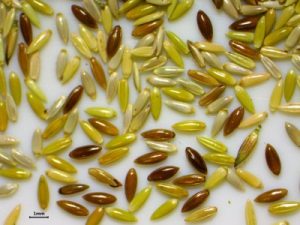 In the Seed Lab, over 25 million seeds are banked, representing more than 600 taxa of native Hawaiian plants, or more than 40% of the flora. Of these, about 40% are federally listed as endangered. The Seed Lab partners with Lyon’s Micropropagation Lab, the Plant Extinction Prevention Program (PEPP), the Department of Forestry and Wildlife (DOFAW), and others to provide for both long-term storage – preservation of genetic diversity – and propagation of plants for restoration efforts. We also conduct research on seed characteristics such as storage behavior, longevity, dormancy, and germination.
In the Seed Lab, over 25 million seeds are banked, representing more than 600 taxa of native Hawaiian plants, or more than 40% of the flora. Of these, about 40% are federally listed as endangered. The Seed Lab partners with Lyon’s Micropropagation Lab, the Plant Extinction Prevention Program (PEPP), the Department of Forestry and Wildlife (DOFAW), and others to provide for both long-term storage – preservation of genetic diversity – and propagation of plants for restoration efforts. We also conduct research on seed characteristics such as storage behavior, longevity, dormancy, and germination.
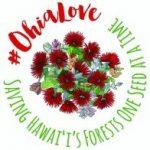 Lyon’s Seed Conservation Lab also spearheads efforts to bank seeds of ʻōhiʻa during the Rapid ʻŌhiʻa Death crisis, including the #OhiaLove Campaign (2016-2017) and the ROD Seed Banking Initiative (2017 and ongoing). We’ve already collected and banked over 4 million seeds and are now scaling up the efforts across all islands, which included an ʻōhiʻa seed collection workshop series in 2017-2018, open to all, with another series coming up in 2019.
Lyon’s Seed Conservation Lab also spearheads efforts to bank seeds of ʻōhiʻa during the Rapid ʻŌhiʻa Death crisis, including the #OhiaLove Campaign (2016-2017) and the ROD Seed Banking Initiative (2017 and ongoing). We’ve already collected and banked over 4 million seeds and are now scaling up the efforts across all islands, which included an ʻōhiʻa seed collection workshop series in 2017-2018, open to all, with another series coming up in 2019.
Watch the video below to learn more about what we do:
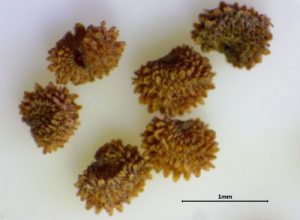
Lyon Arboretum was recognized by BGCI’s Global Seed Conservation Challenge for banking the rarest seeds in the world – Silene perlmanii!
Prior to the establishment of the Seed Conservation Lab’s earliest collections in 1995, little was known about how well seeds of native Hawaiian plant species might be stored. It is estimated that worldwide, about 18.5% of tropical or subtropical seeds are recalcitrant, meaning that they are desiccation-sensitive and cannot be stored long-term. However, with our current knowledge, only about 6% of Hawaiian taxa have recalcitrant seeds – great news for our seed banking efforts. On the other hand, many Hawaiian seeds face other challenges with long-term storage. About 1/3 of our taxa have ‘intermediate seeds’ requiring special storage conditions — a trend unknown in any other regional flora.

Koʻokoʻolau (Bidens torta) seeds sown on a petri dish for viability testing.
We continue to conduct research on new and existing collections, testing viability over time and building on over 23 years of data. Through our research program, the Seed Lab is emerging as a global leader in ex situ conservation of tropical seeds.
Facilitating UH Research
The Seed Lab generates many native plant seedlings through our regular germination testing. While many of these are propagated for rare plant restoration efforts, we also do generate seedlings of more common species or other species that are not set aside for restoration. Sometimes these seedlings could be used by UH faculty and students for research. Please contact us if you are interested in learning more.
Micropropagation Laboratory

Rare plants growing in the Micropropagation Lab.
Micropropagation is an indispensable tool in plant recovery work, especially in the case of immature seeds, extremely rare taxa, or unhealthy plant stock. In vitro storage is considered a medium-term storage method, high maintenance, but is capable of growing living plant tissue in large numbers under a disease-free, climate-controlled environment. While much of the focus of the Micropropagation Lab is on propagating plants for active conservation, we also continually conduct research to develop new, and/or improve existing methodologies for the initiation and maintenance of in vitro living plant collections.
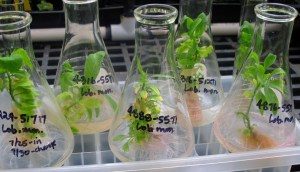
Lobelia monostachya in hydroculture.
To date, the Micropropagation Lab has successfully grown approximately 300 of the 1400+ Hawaiian plant taxa using micropropagation techniques, of which 136 are federally listed as endangered or threatened. Currently, the lab has a total inventory of 23,954 plants consisting of 232 native plant taxa at various stages of propagation in the lab. Of these, 146 (62.9%) are federally listed as Endangered, 21 (9.1%) Species of Concern, (1%) Threatened, and 8 (3.4%) Candidate. In the last 2 years, over 2000 plants have been sent out of the micropropagation and greenhouse facility for restoration purposes.
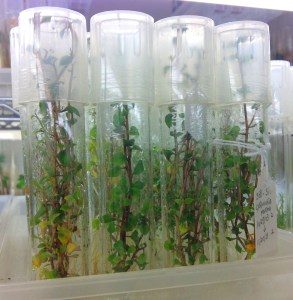
Lehua makanoe (Lysimachia maxima) in tissue culture.
Research areas include developing and modifying protocols for maintenance of existing in vitro collections. Additionally, due to the uniqueness of Hawaiʻi’s native species and the lack of existing propagation references, culture conditions must be individually determined for each new submission that enters the program. In vitro grown plants also generally require an acclimatization “transition” stage before they can be grown normally under greenhouse and outdoor conditions, and we are developing new methodologies to improve success rates with this transition. Research in the Micropropagation Lab facilitates preservation of genetic diversity and provides propagules for conservation and restoration efforts statewide.
More about the Rare Plant Program
Read more about the Rare Plant Program in the Four Seasons Magazine
View the 2018 Hawaiian Rare Plant Action Plans
Image source: Four Seasons Magazine
